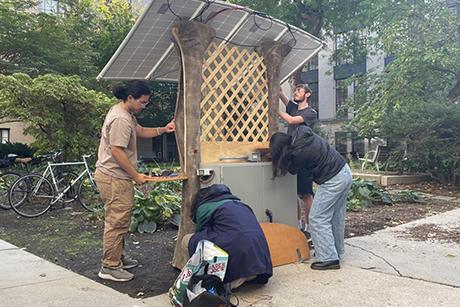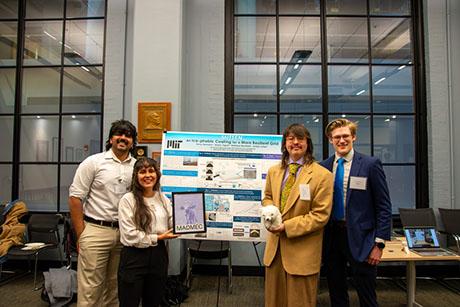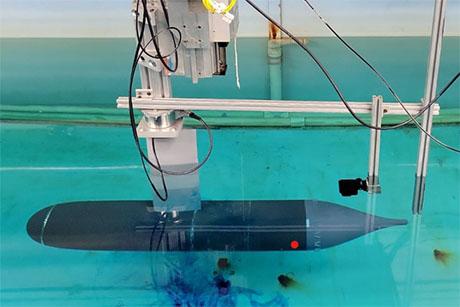Talking Shop: Professor Themis Sapsis
Professor Sapsis’ research focuses on the area of stochastic dynamical systems in ocean engineering, including uncertainty quantification of turbulent fluid flows, passive protection configurations for vibration mitigation in structural systems, and energy harvesting from ambient vibrations. One particular focus is on the characterization of the ocean conditions that cause extreme wave events (rogue waves) (Fig. 1), which have been responsible for many ship accidents.
Since these monstrous waves, often reaching 80 feet or higher, had no obvious pattern of occurrence, Professor Sapsis and his group have been working toward the development of short-term predictive schemes that are able to quickly predict the times and locations where there is a high probability for an extreme wave to occur, before it even starts to form.

Figure 1 (courtesy of researchers)
MC: If these events are seemingly random, how do you gather enough data to know when to look for them or where to find them?
TS: We are utilizing information for the current state of the system that is available from radars of a ship or an off-shore platform. Using the current wave field we are able to spot locations of high probability for an extreme event. This is possible by identifying low-energy patterns that “trigger” the formation of the extreme wave; ironically, the challenge with identifying these triggers is their low energy, which makes it particularly hard to distinguish them from the complex background of waves. But we have shown that with careful analysis one can formulate ways to identify those triggers very efficiently.
What have you discovered about what is causing these events?
The mechanism we have discovered is related to a critical length-scale associated with important energy transfers – and when I say critical length-scale, it also goes with a critical amount of energy. We have seen that when we happen to have a sufficiently strong localization of energy as a result of the dispersive propagation of waves, then there is a high probability that this situation will trigger the formation of an extreme event.
Why is this happening? The reason is because this scale is the most sensitive to instabilities. Thus, if we exceed a certain amount of energy on this critical length-scale, instability occurs in which energy starts flowing into smaller and smaller scales, and that gives higher wave elevation. We analyze this mechanism by using localized basis elements that help us to understand and visualize these energy fluxes. Next, we apply statistical analysis to see how these energy fluxes are associated with the eventual formation of an extreme event. Then we use this statistical knowledge and apply it to a prediction framework where we are able to see and analyze the spectral content – in other words, how energy is distributed over space and frequencies or wave numbers. By looking at that, we are able to say that in this location there is enough energy to trigger this instability, which we have seen before and will most likely lead to an extreme event. We are utilizing rigorous mathematical analysis and concepts in order to obtain inexpensive and practical methods that we will be able to run on real time and give useful predictions (Fig. 2).

Figure 2 (courtesy of researchers)
If a crew were out on a ship, would this information help them avoid a problematic location?
Yes. We cannot control these events – this is nature, and the amount of energy associated with these events is huge – but we can avoid them. An immediate application of this information would be ship navigation – especially autonomous ship navigation. We could know where the high-risk areas are and navigate away from them.

Themis Sapsis
American Bureau of Shipping Career Development Assistant Professor Themis Sapsis graduated from the National Technical University of Athens where he earned his diploma in naval architecture and marine engineering in 2005. He began his graduate studies at MIT in 2006, earning his PhD in mechanical engineering in 2011. He then spent two years as a Research Scientist in Courant Institute of Mathematical Sciences at NYU. As an MIT student, he was named the George and Marie Vergottis MIT Presidential Fellow. Professor Sapsis has also twice received the European Union’s Marie Curie Fellowship, as well as the Best Paper Award for Young Scientists at the Chaotic Modeling and Simulation Conference in 2009.


